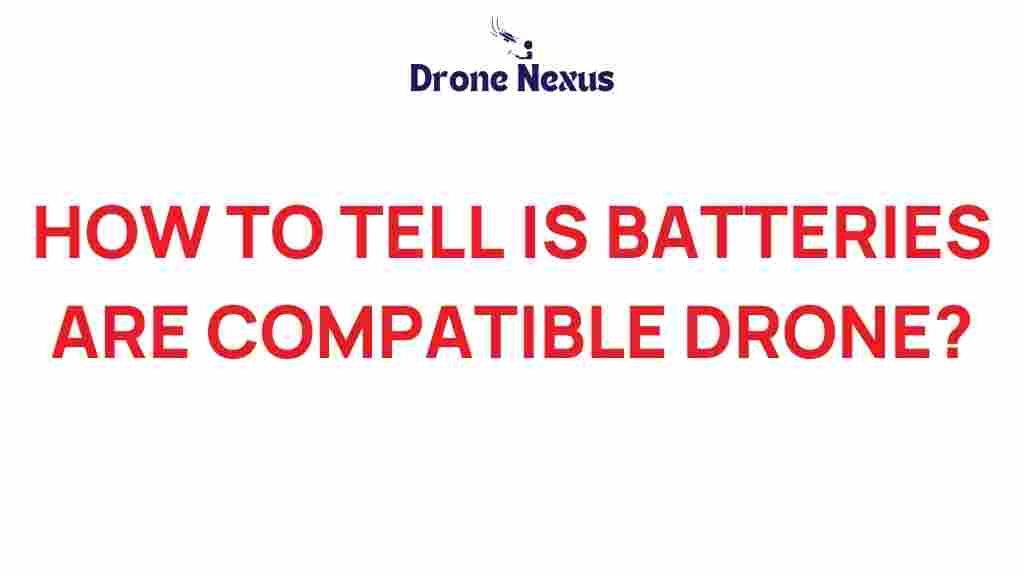Drone Batteries: Unraveling the Mystery of Battery Compatibility
As the world of drones continues to expand, understanding the importance of drone batteries and their compatibility becomes critical for both hobbyists and professionals. The right battery not only ensures optimal performance but also prolongs the lifespan of your drone. In this article, we will unravel the mystery surrounding drone battery compatibility and guide you through determining which batteries will work best for your specific drone model.
Understanding Drone Batteries
Drone batteries are essential components that power your flying machines. They come in various types, sizes, and specifications, and understanding these differences is key to ensuring that your drone operates efficiently. The most common type of battery used in drones is the Lithium Polymer (LiPo) battery, favored for its high energy density and lightweight characteristics.
Key Features of Drone Batteries
When selecting the appropriate drone batteries, it’s important to consider the following features:
- Voltage (V): Indicates the energy potential of the battery.
- Capacity (mAh): Refers to the total charge the battery can hold, affecting flight time.
- Discharge Rate (C): Measures how quickly a battery can be discharged, impacting performance.
- Size and Weight: Ensure compatibility with your drone’s design.
Step-by-Step Process to Determine Drone Battery Compatibility
Now that you have a basic understanding of drone batteries, let’s delve into how to determine their compatibility with your drone. Follow these steps:
Step 1: Check Your Drone’s Specifications
Every drone comes with a user manual or product specifications that detail the recommended battery type. Look for:
- Battery model number
- Voltage requirements
- Capacity (mAh)
- Discharge rates (C rating)
Step 2: Research Battery Options
Once you have the specifications, research available drone batteries that meet these requirements. You can find reputable battery retailers online or in local hobby stores that sell drone batteries. Ensure that the batteries are compatible with your drone model by:
- Reading product descriptions
- Checking user reviews
- Comparing specifications
Step 3: Consider Battery Connectors
Different drones use various battery connectors, which can affect compatibility. Common connector types for drone batteries include:
- XT60
- Deans (T-Plug)
- JST
Make sure that the connector on your new battery matches the one on your drone. If they don’t match, you may need an adapter or to change the connectors, which can involve soldering.
Step 4: Verify Physical Fit
Even if a battery meets the voltage and capacity requirements, it must fit physically within the drone’s battery compartment. Measure your drone’s battery bay and compare it to the dimensions of the battery you’re considering to ensure a snug fit.
Step 5: Safety Considerations
When selecting drone batteries, safety is paramount. Always choose batteries from reputable manufacturers, and check for certifications such as CE or RoHS. Additionally, avoid using damaged or swollen batteries, as they pose fire hazards.
Troubleshooting Common Battery Compatibility Issues
Even with careful selection, you may encounter compatibility issues with drone batteries. Here are some troubleshooting tips:
Issue 1: Short Flight Times
If your drone is not flying for the expected duration, check the capacity of your battery. A lower capacity battery may not provide enough power for your drone, leading to shorter flight times. Consider upgrading to a battery with a higher mAh rating.
Issue 2: Overheating
Overheating can occur if the discharge rate of the battery is too low for your drone’s motor requirements. Ensure the battery’s C rating meets or exceeds the demands of your drone’s motors.
Issue 3: Difficulty in Connecting the Battery
If you find it difficult to connect the battery to your drone, double-check the connector type. You may need to switch to a compatible connector or use an adapter. Additionally, ensure that there is no obstruction in the battery compartment that could prevent a proper fit.
Conclusion
Determining drone battery compatibility is crucial for optimal performance and safety. By understanding your drone’s specifications, researching battery options, checking connectors, ensuring a proper fit, and adhering to safety considerations, you can make informed decisions about which drone batteries to use. Regularly monitoring your batteries for wear and tear will help prolong their lifespan and enhance your flying experience.
For more information on drone maintenance and upgrades, check out our detailed guide on drone care and upkeep. Happy flying!
This article is in the category Accessories and created by DroneNexus Team
